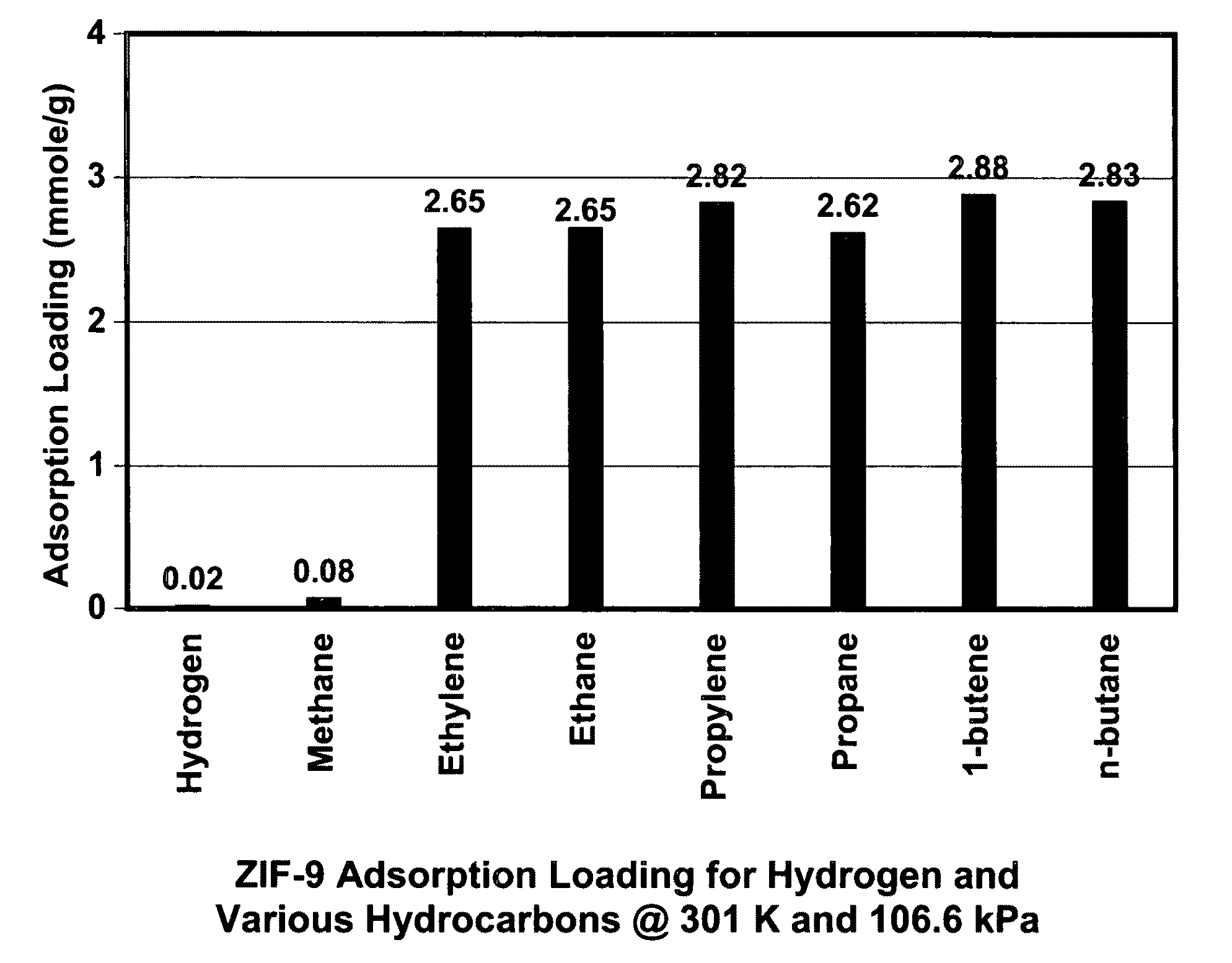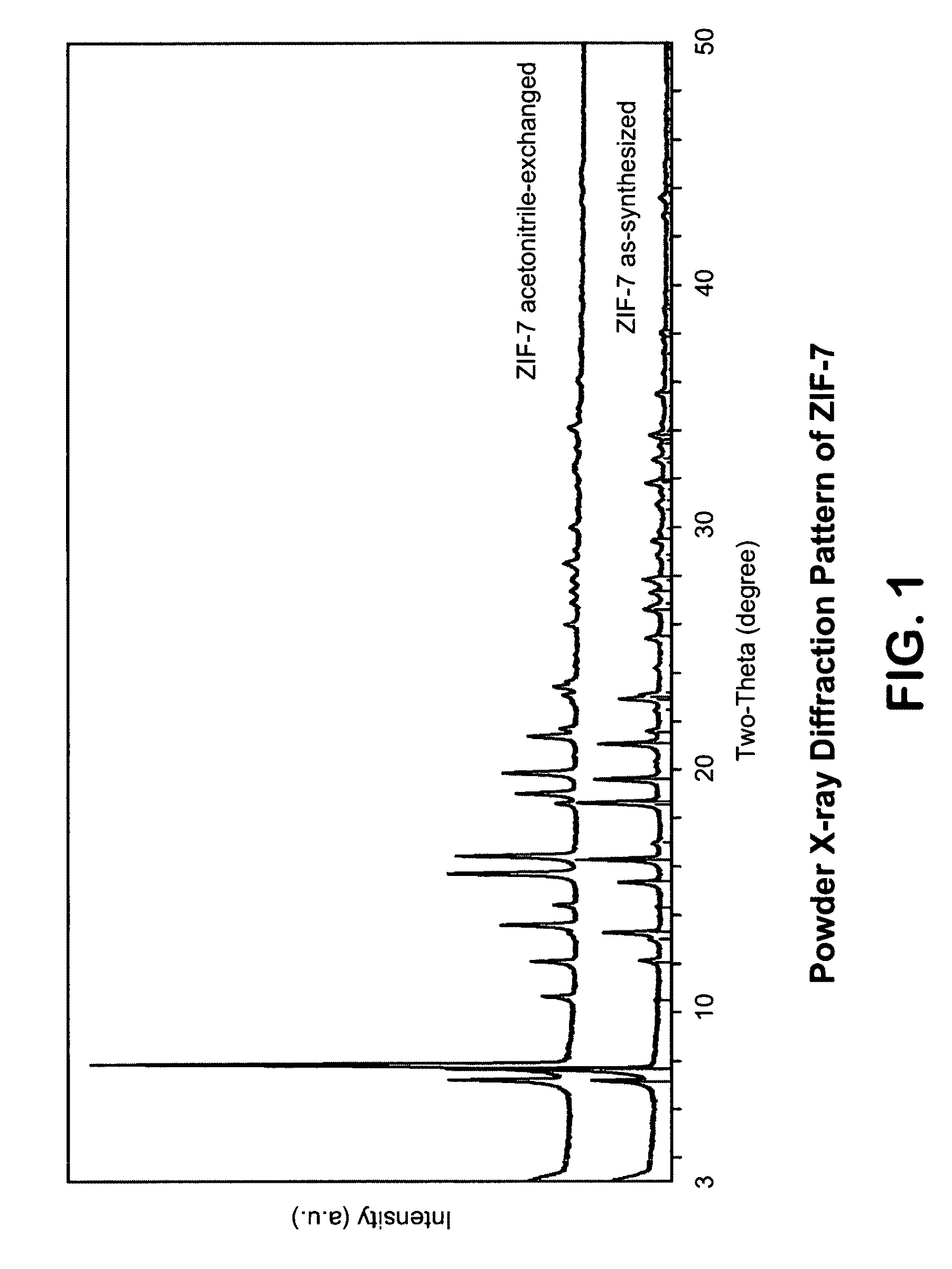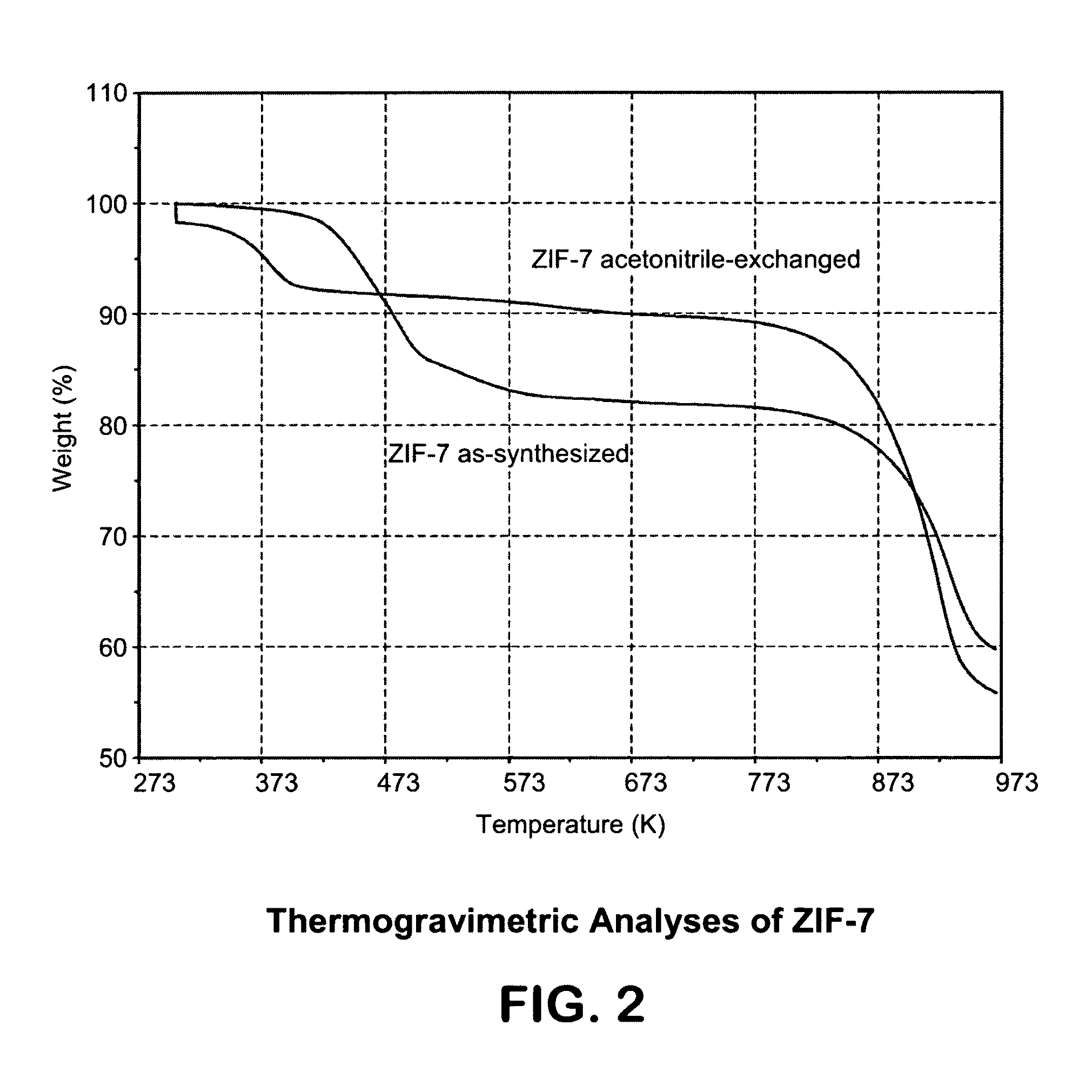Separation of hydrogen from hydrocarbons utilizing zeolitic imidazolate framework materials
a framework material and hydrogen technology, applied in the direction of hydrogen separation using solid contact, chemical/physical process, inorganic chemistry, etc., can solve the problems of gas efficiency and effectiveness, not selectively adsorption of components, and finding suitable materials that specifically, so as to achieve the effect of effective separation of hydrogen
- Summary
- Abstract
- Description
- Claims
- Application Information
AI Technical Summary
Benefits of technology
Problems solved by technology
Method used
Image
Examples
example 1
[0121]In this example, a ZIF-7 material was synthesized. The framework of ZIF-7 has a chemical composition of ZnL2 (wherein L=benzimidazolate, i.e., the anion of benzimidazole) and a topology defined by the Zn cations that is identical to the zeolitic framework type SOD. SOD is a three-letter framework type code as defined by the International Zeolite Association (“IZA”) in the “Atlas of Zeolite Framework Types” (Ch. Baerlocher, L. B. McCusker, D. H. Olson, Sixth Revised Edition, Elsevier Amsterdam, 2007).
[0122]In the synthesis of the ZIF-7 material, 9.00 g of zinc nitrate tetrahydrate (Zn(NO3)2.4H2O, 34.4 mmol) and 3.00 g of Benzimidazole (25.4 mmol) were dissolved in 900 ml DMF (N,N-Dimethylformamide) in a 1 liter glass jar. The jar was tightly capped and the reaction mixture was heated in an isothermal oven at 373 K for 48 hours. After reaction, the mother liquor was decanted. The solid crystallized on the side wall and the bottom part of the jar was collected, washed with and st...
example 2
[0129]In this example, a ZIF-9 material was synthesized. The framework of ZIF-9 has a chemical composition of CoL2 (wherein L=benzimidazolate, i.e., the anion of benzimidazole) and a topology defined by the Co cations that is identical to the zeolitic framework type SOD. SOD is a three-letter framework type code as defined by the International Zeolite Association (“IZA”) in the “Atlas of Zeolite Framework Types” (Ch. Baerlocher, L. B. McCusker, D. H. Olson, Sixth Revised Edition, Elsevier Amsterdam, 2007).
[0130]In the synthesis of the ZIF-9 material, 1.26 g of cobalt nitrate hexahydrate (Co(NO3)2.6H2O, 4.33 mmol) and 0.360 g of Benzimidazole (3.05 mmol) were dissolved in 108 ml DMF (N,N-Dimethylformamide) in a 120 ml vial. The vial was tightly capped and the reaction mixture was heated in an isothermal oven at 373 K for 96 hours. After reaction, the mother liquor was decanted. The solid crystallized on the side wall and the bottom part of the jar was collected, washed with and store...
example 3
[0137]In this example, a ZIF-1 material was synthesized. The framework of ZIF-1 has a chemical composition of ZnL2 (wherein L=imidazolate, i.e., the anion of imidazole) and a topology defined by the Zn cations that is identical to the zeolitic framework type BCT. BCT is a three-letter framework type code as defined by the International Zeolite Association (“IZA”) in the “Atlas of Zeolite Framework Types” (Ch. Baerlocher, L. B. McCusker, D. H. Olson, Sixth Revised Edition, Elsevier Amsterdam, 2007).
[0138]In the synthesis of the ZIF-1 material, 1.25 g of zinc nitrate tetrahydrate (Zn(NO3)2.4H2O, 4.77 mmol) and 2.75 g of Imidazole (40.4 mmol) were dissolved in 100 ml DMAc (N,N-Dimethylacetamide) in a 120 ml glass vial. The vial was tightly capped and the reaction mixture was heated in an isothermal oven at 358 K for 72 hours. After reaction, the mother liquor was decanted. The solid crystallized on the side wall and the bottom part of the vial was collected and washed with DMF (N,N-Dim...
PUM
| Property | Measurement | Unit |
|---|---|---|
| mol % | aaaaa | aaaaa |
| mol % | aaaaa | aaaaa |
| mol % | aaaaa | aaaaa |
Abstract
Description
Claims
Application Information
 Login to View More
Login to View More - R&D
- Intellectual Property
- Life Sciences
- Materials
- Tech Scout
- Unparalleled Data Quality
- Higher Quality Content
- 60% Fewer Hallucinations
Browse by: Latest US Patents, China's latest patents, Technical Efficacy Thesaurus, Application Domain, Technology Topic, Popular Technical Reports.
© 2025 PatSnap. All rights reserved.Legal|Privacy policy|Modern Slavery Act Transparency Statement|Sitemap|About US| Contact US: help@patsnap.com



